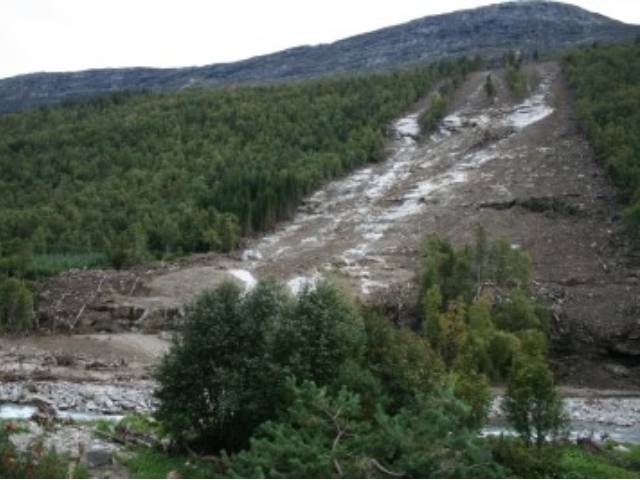A three-year European Space Agency study will look at the potential of satellite‑based monitoring technologies in reducing risks posed by geohazards.
A consortium of Inmarsat, the world leader in global, mobile satellite communications with SINTEF, one of Europe’s largest independent research organisations, and fellow Norwegian company Geonor has been awarded a three-year contract with the European Space Agency (ESA) to develop a natural disaster early warning system.
Using Inmarsat’s award winning global L-band satellite network the consortium will develop a new government grade Internet-of-Things (IoT) solution that can provide early warnings in the event of a natural disaster, even in the most remote locations. This new satcom‑IoT technology has two important advantages over existing solutions: global coverage and security, thus making it extremely suitable for government applications.
SINTEF already has significant expertise in IoT and geohazards developed over several years through research projects such as KlimaDigital and Klima 2050.
“The objective is to demonstrate the use of a secure satcom‑IoT solution that will support civil government users to help reduce risks from geohazards, such as landslides, rock falls, avalanches, debris flow and floods,” said senior SINTEF researcher Ivan Depina. “Inmarsat’s unique global coverage allows us to install monitoring equipment anywhere around the globe, which is of crucial importance for monitoring remote and inaccessible areas threatened by geohazards.”
The efficiency of IoT technology allows for monitoring over long periods of time, extending to several years, and yet requires low power use as well as low maintenance requirements. The Inmarsat communications link is also supplied with world-leading cyber security, which is a key factor in the development of monitoring solutions for geohazards. Security-hardened IoT solutions will be developed for this project, which will benefit from Inmarsat’s secure space and ground network.
“We are delighted to be working with SINTEF and Geonor on this ESA-supported project,” said Nick Shave, Inmarsat’s Vice President of Strategic Programmes, Global Government. “Providing critical safety of life services that are secure and reliable for our government customers is central to Inmarsat’s mission. Norway can experience thousands of landslides every year and we are keen to see how this ESA pilot can make a positive impact to public safety.”
The government IoT solution is capable of monitoring a range of geohazards, such as landslides and flooding. The Norwegian pilot will be monitoring landslides in the Trøndelag region of central Norway. The area is highly susceptible to various types of geohazards events due to the topographic, geological, hydrological and meteorological conditions characteristic for this region.
The solution is supported by ESA as a part of the “Space Systems for Safety and Security (4S)” programme, which is a new component in ESAs advanced research in telecommunication systems (ARTES). The programme aims to transform R&D investments to successful commercial products and services. The project is also supported by the Department for Energy and Water (NVE) and the UK Space Agency and Norwegian Space Agency.






































